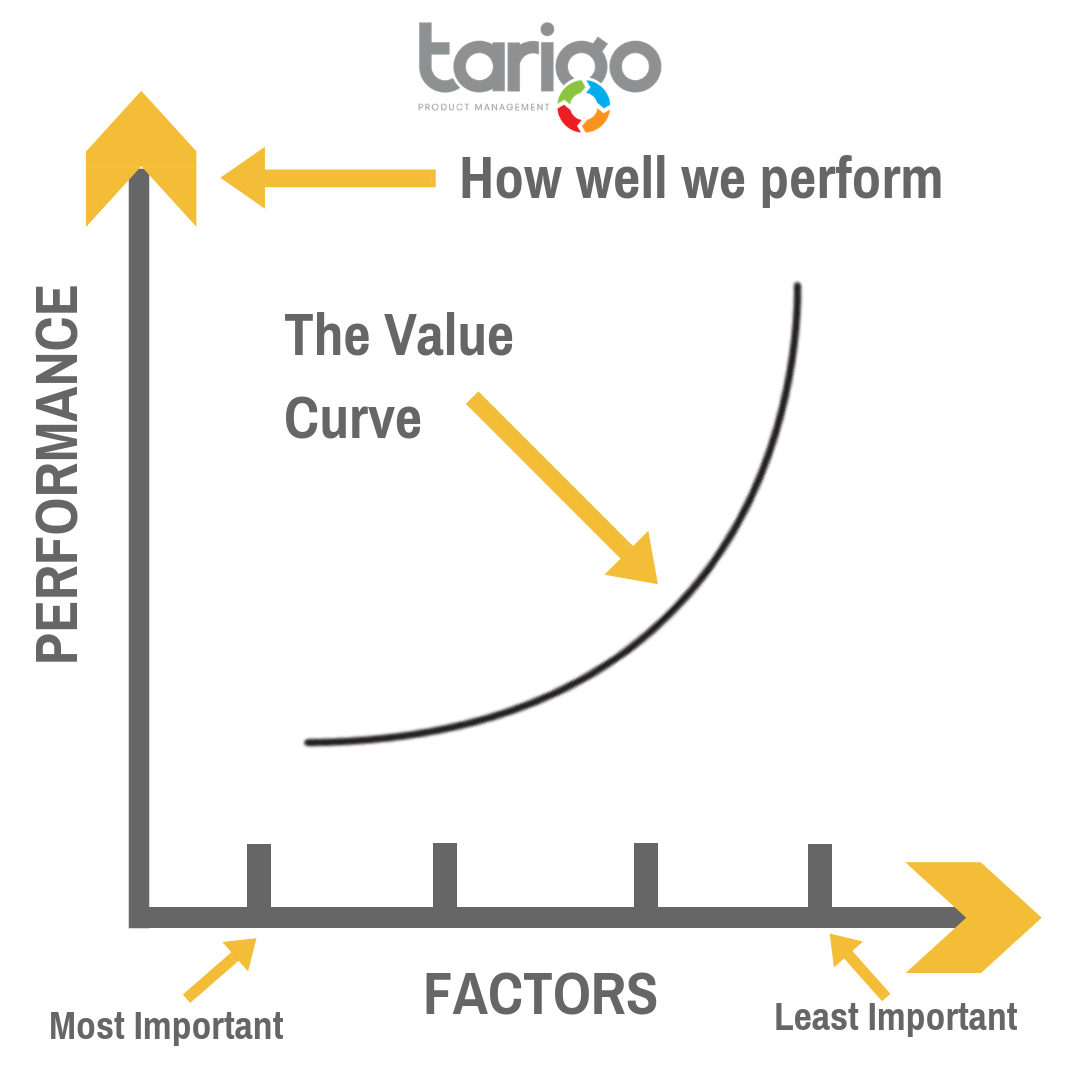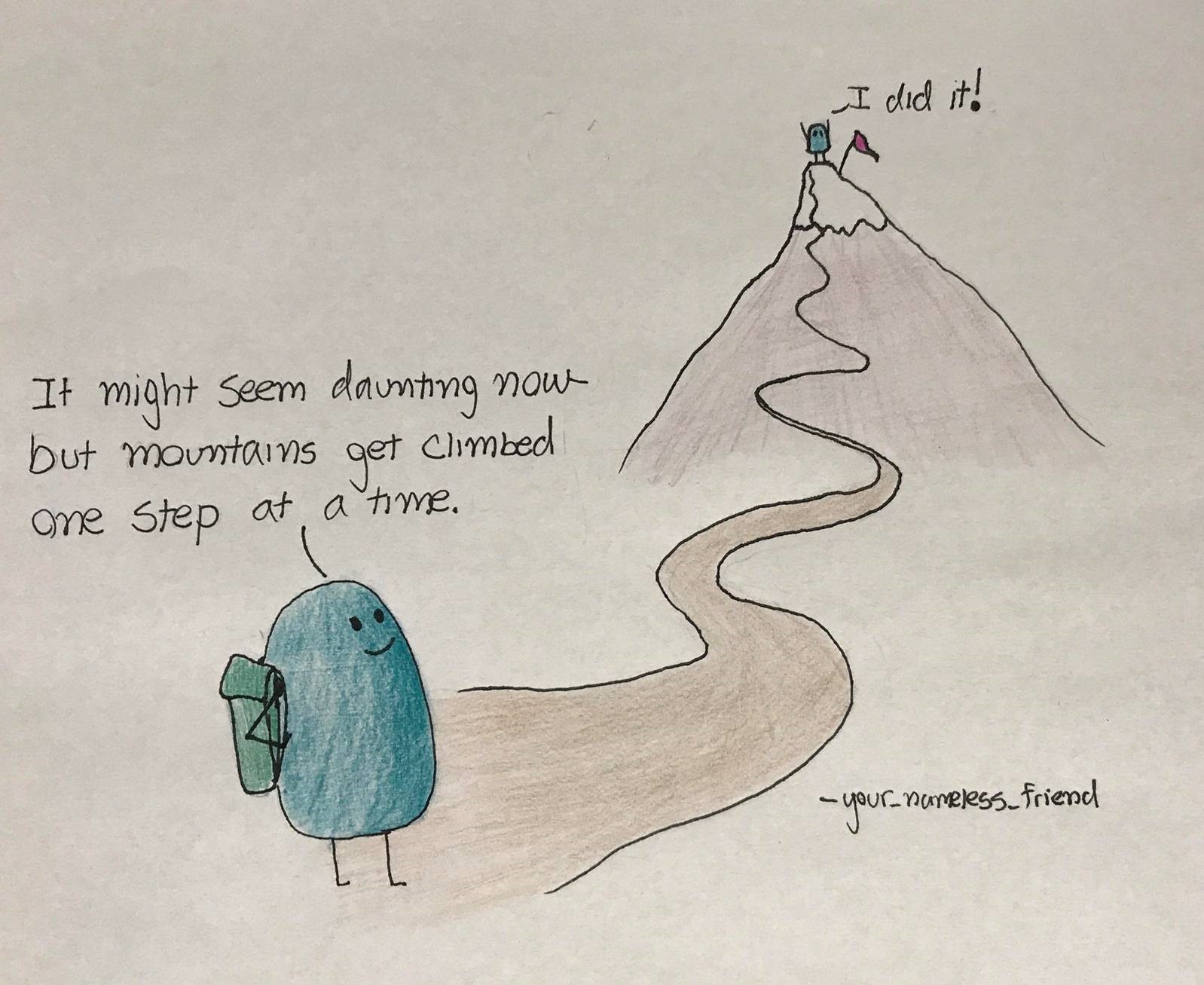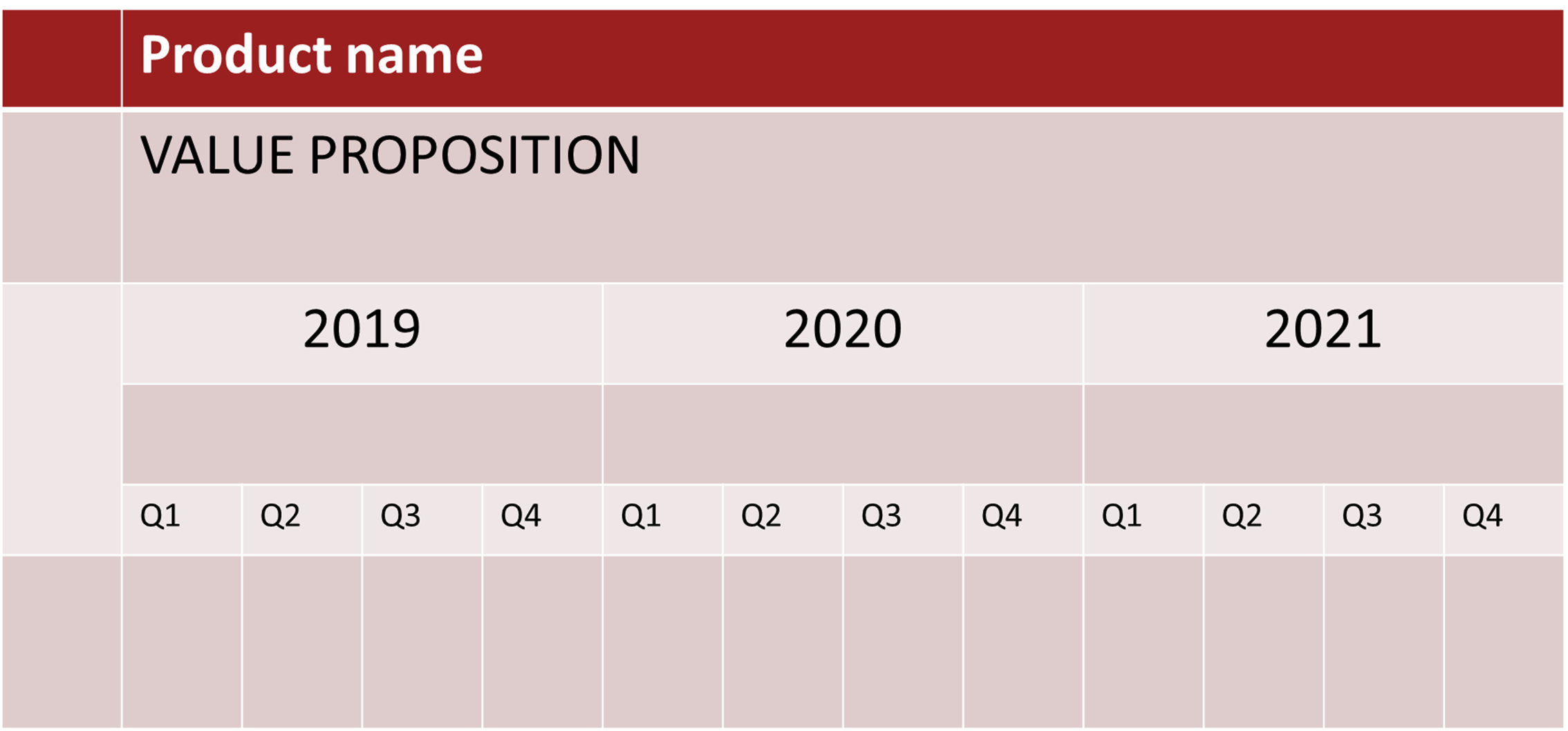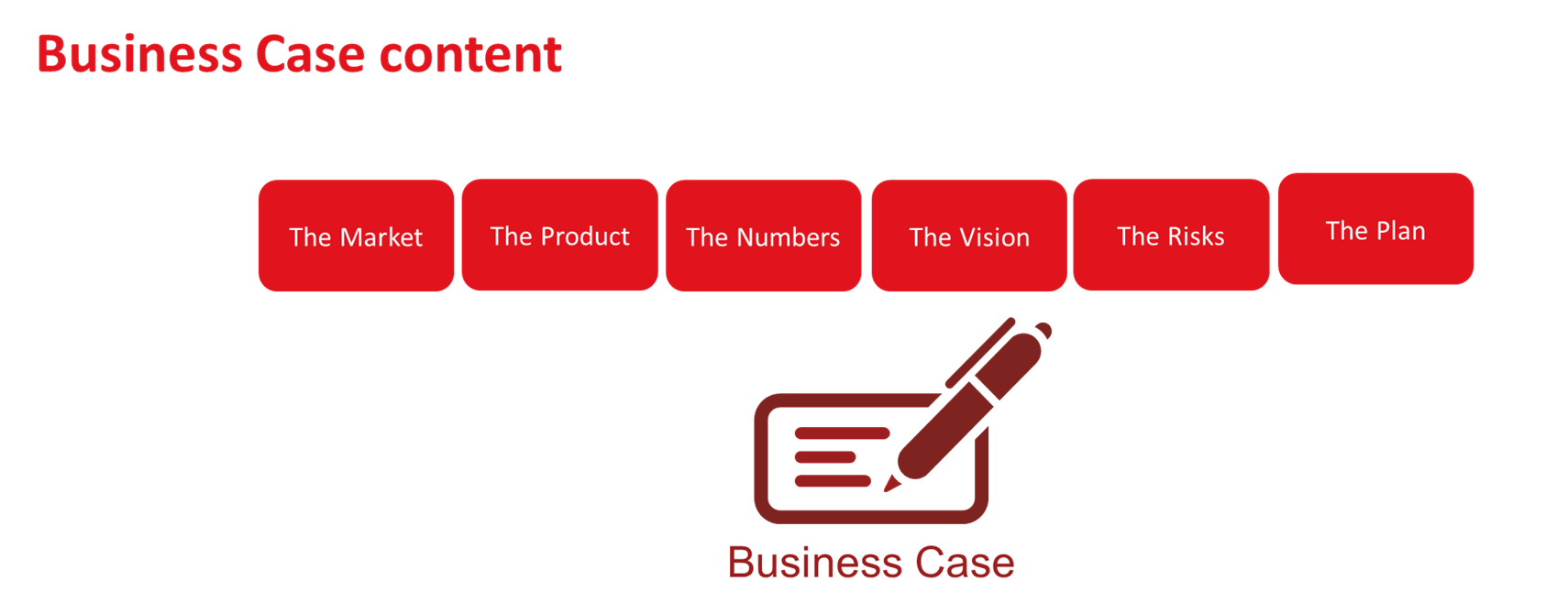Your daily dose of Product Management Goodness
Want to know more?
We would love to hear your questions and suggestions for topics you would like to see covered in our future blog posts, so don't be shy and get in touch!

Tracking Product Success
How do you track product success?
Product Managers need to be able describe if the product they launched was successful, typically in metric form. Simple idea, but difficult to do. Whether you’re an OKR or KPI or SMART fan, it’s important to think in terms of lag and lead. Some metrics lag – think revenue. It’s critical, but if that’s all you quantity then there’s very little action you can take at the point that the metric becomes measurable. Other metrics lead – think pilot customer or launch date. These give an indication that you’re on the right path. Product Managers should think of a funnel of metrics that describe not just what success looks like, but that journey to success.
read more

Disappear or Shift?
Does your Market Disappear or Shift?
The ‘decline of the high-street’ has been regular news for the what seems like forever. Few weeks go by without another casualty hitting the headlines. Talking with a group who are dealing with this got me thinking - is it market decline or market shift? Take Blockbuster for example, they filed for bankruptcy, blaming a declining market. In reality, their market was larger than ever, it had just shifted towards the online & digital space.
So, what can we learn from this? Sure, some markets disappear, but most shift. And these shifts cause disruption that product managers can either embrace and take advantage of or ignore and find their products and services irrelevant.
Don’t get left behind by your market because of stubbornness or short-sighted, tactical thinking.
read more

Product Manager Characteristics
What are the characteristics of a good product manager?
It’s a question we face when we’re helping businesses build a product management function. If you’re recruiting experienced Product Managers then you might look for skills – launch skills, research skills, pricing skills, etc. But what about that person sat in support who is looking for a new challenge? They might not have the skills just yet, but do the have the core capability?
Here’s our quick checklist for working out if they have pm potential:
Curiosity – Do they demonstrate intellectual interest? Are they eager to learn?
Drive – Do they show ambition?
Discipline – Are the organised?
People skills – Can they get people to listen to them. Can they take people with them? Are they charismatic?
Communication – Can they get their point across clearly and quickly?
Thought leadership – Do they have vision? Are they a creative problem solver?
read more

Releasing a Product
How often is too often to release a product?
Working with a team last week, we got to a common agile conundrum; core to the agile process is the concept of frequent, iterative product releases. This is often seen as nothing but positive by many teams “You can release product updates every 7 days!”, but there are many markets where this makes no sense at all. For instance, your customer is a bank and your product has security implications – the iterative agile model simply can’t operate in that world. So is agile the wrong process for these types of products? Not necessarily. The agile process delivers regular product updates, but the product management team can choose what to do with those updates release to customer or hold back and bundle into a bigger product release that works for the customers business.
read more

Importance of Innovators
If, like me, you believe your greatest marketing and sales tool is through advocacy and referral, having others talk about your product, getting them selling the virtues of how your solution will benefit likeminded customers with the same need then you will believe this approach will drive the strongest growth and, if you get it right, a strong bond between you and your customer base going forward.
I have never, over the years, found a greater marketing and sales machine than ‘bought into customers’. The client, through developing a great relationship with you, then progresses to buying into the brand and solutions you deliver. They become your unofficial ambassadors.
The first and the greatest voice of these customers you want onboard, are the customers that everyone is looking towards to guide the market, these are your innovators. If you are entering into an existing market with a new product, and you have a prior relationship with any of this influential group then gather them together to give them a close up look at your product. Get them excited and engaged so they will talk about and promote your product.
If it is a new market, you are going to have to do some work on segmentation of the market and start building personas as to what an innovator looks like in this new market. Then start to build relationships with these innovators either on a 1-2-1 basis or via group consultation.
In a new market, once the innovators have bought into your culture and vision, you need to show how working with you will help change the market. When they are excited with the vision, get them engaged with the product you are going to launch. You can do this in a number of ways but here are some ideas: Offer them an incentive to take a look at your new product before anyone else; get them on the pilot providing feedback; offer them a sizable free subscription.
Ultimately whatever tool you are using to bring the innovators onboard, if you can get the innovators to understand and start talking to the market about the value of the product you are launching, you will move from the innovator to early adopter phase of the maturity model much quicker than through direct mailing or other marketing techniques.
Remember, innovators generally are happy to take a risk on a new solution if they feel it gives them a competitive advantage.
read more

Value Curve
Why do customers buy your product?
Working with a team this week to help them position their solution in a complex market. When asking teams why their product wins or loses they often come up with one reason - perhaps a specific product feature or aspect of the service model. Worth remembering that customers rarely buy on one dimension - think about buying a house or a car or some expensive electronics. They are usually a number of factors that drive buyer behaviour. Product managers should always see value through the value curve.
read more

Product Partners
The importance of Product Partners: 4 ways software organisations can increase revenue
For many software companies there is a real challenge in continuing to develop software in keeping pace with changes in the sector. To be successful, you need a business strategy that makes sure you meet the needs of customers in your target market . . . and it’s here where Product Partners play a crucial role.
Product Partners are different to straightforward channel re sellers who include your software in a portfolio of other solutions to sell to their target market. Instead, Product Partners have created software of their own which adds value to your existing solution. They can help you to offer a functionally-rich solution, create better revenue opportunities, position your company as the strongest supplier, and create new active and passive income streams.
There are four main different types of software Product Partner, all of which need to be carefully managed to make the business successful:
1. Advocate partners – recommend a partner product and company to your customers in return for remuneration but would remain in control of the sale from proposal through to closing. It’s a low-touch partnership to add value to your solution.
2. Strategic partners – these are high-value relationships between your company and the Partner, working together for common goals and revenue-share incentives and aligned around the same values and messaging. This involves working in true collaboration and allows your business to position itself as a leading supplier in a given deal.
3. Technical partners – pay a fee to pass information between their product and your product, but their product does not feature within your portfolio. This can represent a separate but active revenue stream for your company.
4. Referral partners – you pass sales leads to Partner companies in exchange for commission remuneration, either per lead or per sale, and allow them to lead the sale through to closure. This is more of a passive income partnership where you are allowing partner companies to capitalise on your customer base in exchange for % of revenue.
Whichever Product Partner strategy you go for (and it can easily be a combination of all four) it’s important to keep the main goal of any partnership in mind; both sides must get value from the relationship.
read more

Product Mgmt in Tech
Where does Product Management belong in Tech organisations?
As tech companies grow and the nature of technology evolves into the world of SaaS and apps, there’s often confusion around where Product Management should sit in the organisation.
Traditional consumer organisations have had a tendency to consider Product Management in the same arena as Marketing. However, the danger here is when Marketing is actually ‘Marketing Communications’ - it means that no-one is involved in defining and delivering the products.
In a lot of Tech companies, the Product Management function tends to be viewed in the technical arena, lumped in with the Development Directorate. The problem here is that the Product Managers can get tied up in functionality and requirements and spend so much time building products that there is no-one engaging the customers to understand their problems or looking ahead and strategising as to what the business needs to do in the future to continue to be successful
To drive the maximum success from a Product Management team, you need to understand exactly what their role is.
A successful Product Management Directorate looks at the needs of the entire business and the entire market. It’s broadly comprised of three main focuses:
· Product strategy
· Product marketing
· Technical product management
The Product Management Directorate will focus the product management team on the business of building solutions for needs now and into the future. The team will engage and communicate with existing and potential customers, articulate and quantify market problems, create business cases and market requirements documents, define standard procedures for product delivery and launch, support the creation of collateral and sales enablement tools, and trains the sales teams on the product.
Within the Tech market, or any market for that matter, the truth is: if you want better products in the future, and for the product management team to be held accountable at organisational level, then it must be represented at Board level in its own right.
read more

Webinars VS Face to Face
When are webinars actually BETTER than face-to-face meetings?
Now don’t get me wrong, webinars are great.
They are a good way of being able to communicate with lots of people at once and they work around your customer’s needs, they allow them to dip in and out as they please and you can offer webinars during the evenings and weekends when they won’t necessarily be tied up with other commitments.
From a business point of view, it allows you to test your solution or concept within the wider market to multiple people at once from the comfort of your own office, drastically reducing your cost.
But they do have a down side.
Almost everyone who uses them says they aren’t as good as face-to-face meetings as it’s difficult to make any real connection. While there is the functionality to ask questions and chat, this is something webinar attendees tend not to do. You effectively end up ‘broadcasting’ your idea when, as anyone who knows me will testify, I believe the key to building a new solution or idea is “listening” and understanding what the customer wants.
It may take more time and effort to meet your potential customers in person, requiring a significant investment of your time, however it usually results in a stronger relationship which can then be taken forward throughout the lifecycle of the developing concept or solution.
But the question is: So when is a webinar actually better than a face-to-face meeting?
Answer: When you want honesty!
Webinars are the perfect platform for showcasing a new product or service and asking for honest feedback. Given the relative anonymity of a webinar (i.e. you don’t have to look the presenter in the eye) your customers will give you their honest opinion on what they’re being shown which makes it an excellent platform for market testing.
Try it out.
Create a webinar with the purpose of gaining feedback and see what happens. People love being asked their opinion and you might get an insight into your product or service which you’ve never had before.
I would also argue that you'll be able to get honest opinions from new users and not just those who already know you and your product well - an excellent way to cast your net wider!
read more

Prod, Prob or Sol managers?
Product, Problem or Solution managers?
I was in conversation with some sales people yesterday and we got on to one of the regular hot topics - product managers talk too much about product. It can sound a little weird - surely a product manager should talk about the product? But too much product focus is wrong because customers don’t really buy products. Think of it like this; the old saying in sales that ‘people buy from people’ has a product management equivalent. “People don’t buy products they buy solutions to problems”. Help sales team sell by ensuring they have clarity on the issues that are front of mind for your customers rather than a dry list of features. Develop a problem and solution focus
read more

Customer Centric
Many organisations would claim to be customer-focused. In truth, to say you’re focused on your customers should really come as standard. Keeping customers happy and giving them the products and services they need is basic business common sense.To be truly successful you need to start being customer-centric – an entirely different approach.
The reasons for being customer-focused are about maximising revenue and this often comes across as a bit self-serving, they look at how they can get more business by creating a product or service that is ‘better’ than the competitors.
Customer-centric organisations aren’t just responding to customer needs. They spend time properly understanding their needs and creating a strategy that brings long-term mutual benefits. The revenue, which results from this approach, is a result of the degree to which their customers have been satisfied.
Customer-focused organisations make decisions that superficially address customer expectations, it’s the Customer-centric approach that results in increased engagement, support, loyalty – and essentially profits – from a happy, expanding customer base.
read more

Concentrate on the footsteps
We’re a couple of weeks into the new year – just long enough for those ambitious plans we had for our product in the new year to start unravelling as the daily grind takes hold. How can Product Managers remain on track when we’re overwhelmed with work? The trick is to divide and conquer – complex, difficult, or overwhelming tasks are made up of many simple and easy steps. So don’t dwell on that huge product launch today to the point it overwhelms, tackle some simple steps that move you a little closer. Concentrate on the next footstep, not the mountain.
read more

Building out a vision
Building out a vision is tough. Working out how to deliver is even tougher! We’ve built a one page canvas that helps:-
1. Define your three year goals for your product
2. Think of annual initiatives or themes for years 1, 2 and 3 that drive to that goal
3. Break the annual initiative down into quarterly points of value
It breaks a big problem down into smaller, bite sized steps.
read more

Product business case
How do you build out a product business case?
It’s a loaded term and everyone seems to have different expectations. So what is a business case?
In simple terms it’d a model to provide justification for undertaking a project or programme. It evaluates the benefit, cost and risk of alternative options and provides a rationale for the preferred solution. Over the next few days we’ll look at the key questioned needed to be answered at each stage of the business case.
read more
Check out the Archive